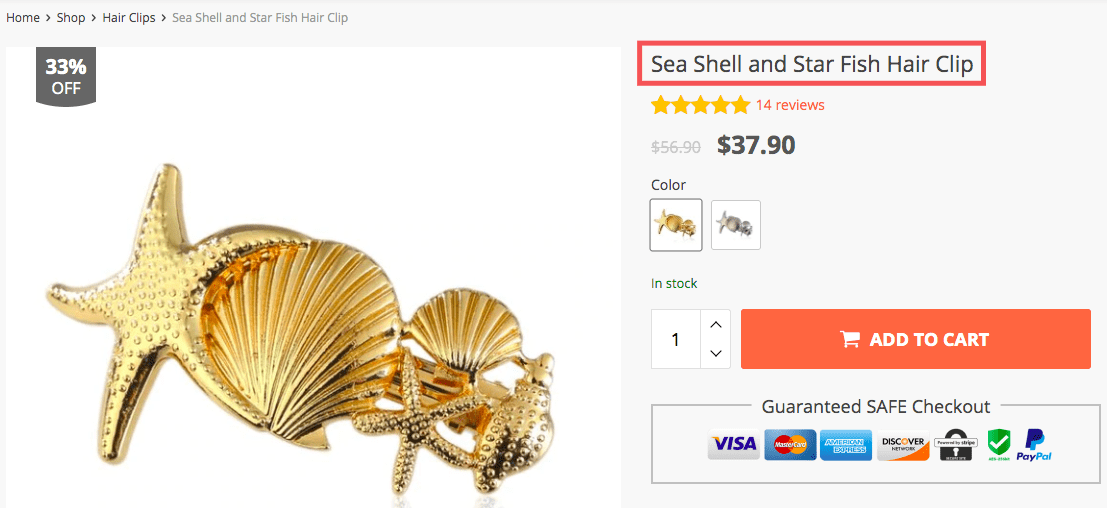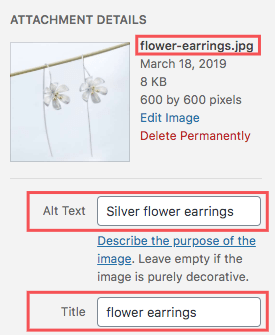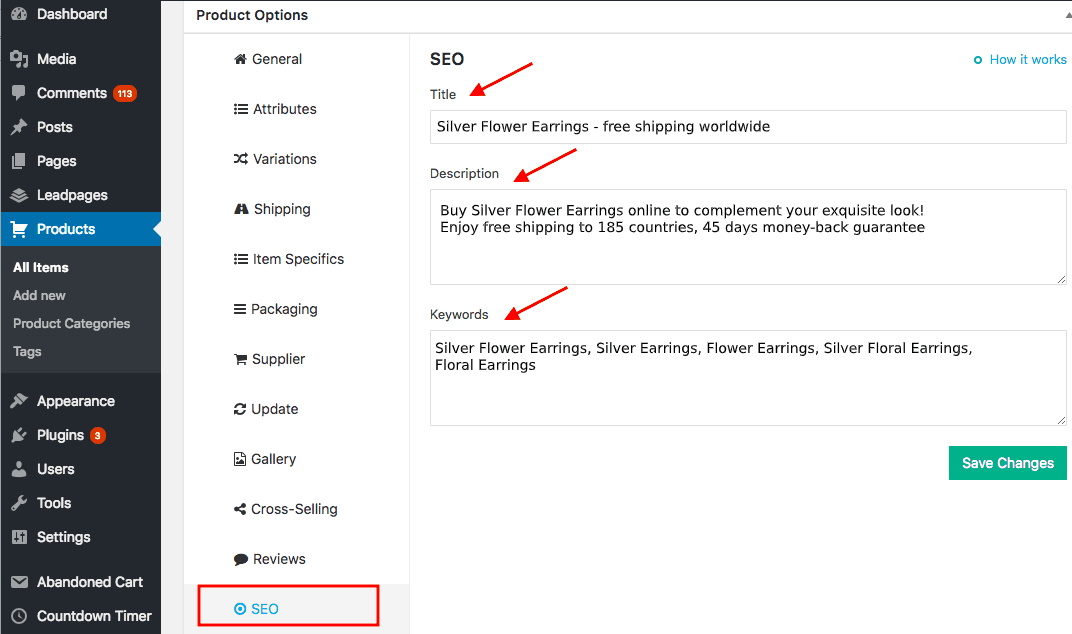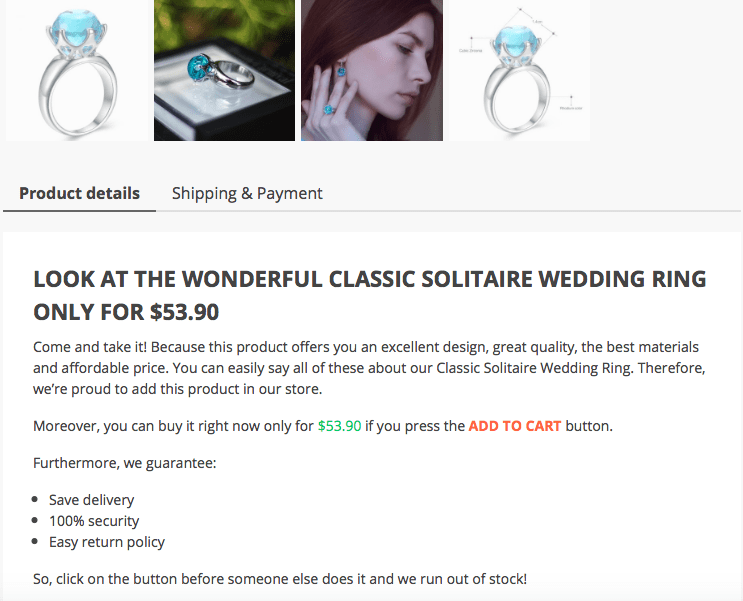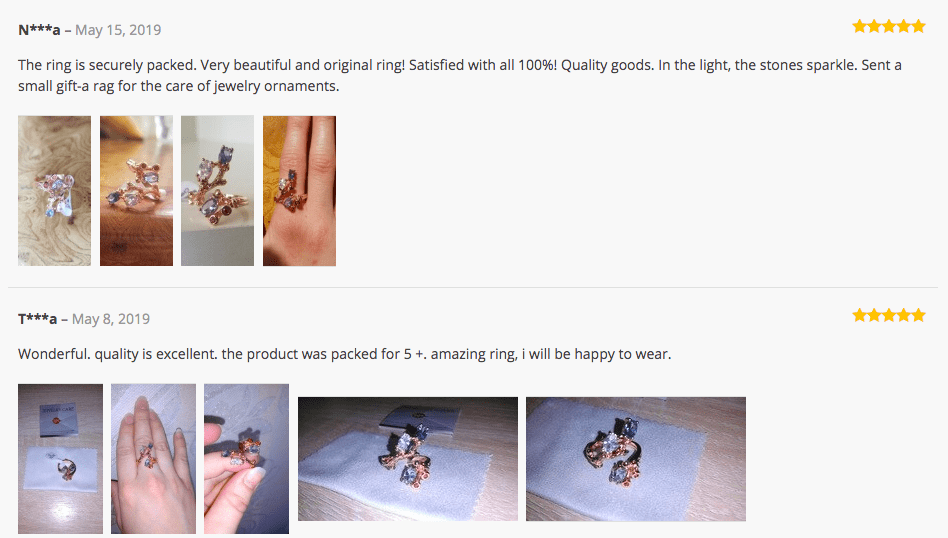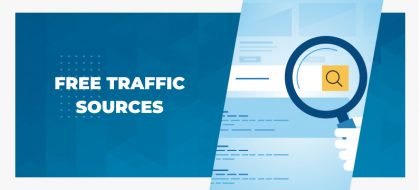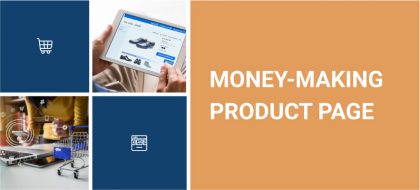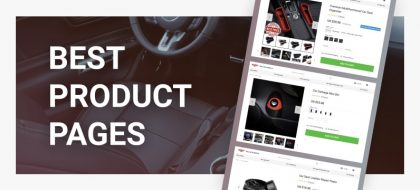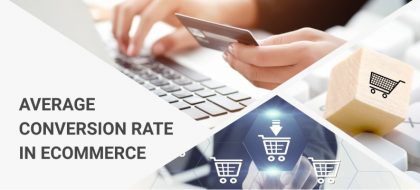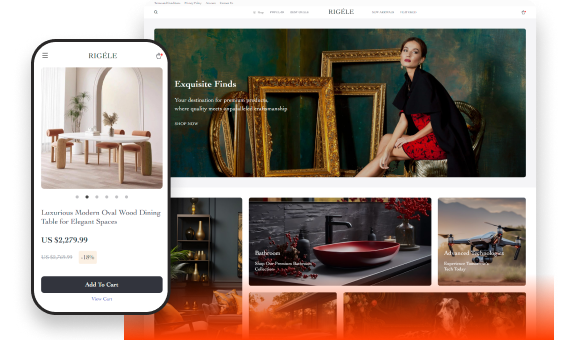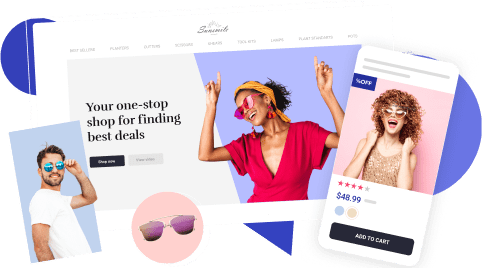Product Page SEO Optimization That Generates $10,000 Per Month
We will never get tired of repeating that search engine optimization (SEO) is the first thing you have to do in order to drive more targeted traffic to your ecommerce store. If you properly optimize all the product pages and website categories once, you will regularly get free traffic from different search engines. Only after that, you can start promoting your store on social media or with PPC ads: Product Page SEO is the foundation of ecommerce.
To start with, we need to determine the meaning of some basic words.
A product page is a unique page of any product in your online store, which includes a detailed product description, its features, price, shipping options, customer reviews, etc. The more valuable information it contains, the better it is for customers, search engines, and for your ecommerce store.A keyword is a query that users type into the Google search box when trying to find a particular item. You can enter the name of the product in the search field on your own and see what options the search engine offers. We also recommend you to go to Amazon or eBay and look at the product names of your competitors.
How product page SEO lets us make up to $10,000 per month
We use our dropshipping stores to test the latest SEO trends and describe the most successful ones in our blog.
After several years of hard work, we came to the conclusion that getting organic traffic from search engines has to become our primary goal.
First, it has a better conversion rate than any other promotional tools such as advertising on social media or Google Shopping Ads. Secondly, it doesn’t cost us anything except our efforts and the long sleepless nights 🙂 So we have decided to concentrate all our thoughts and energy on this traffic source and make the most of it.
The process is divided into 2 phases:
- Adding as many products related to our web store as possible
- Product pages SEO – editing headlines, product descriptions, metatags, photos, and adding reviews.
Right as we expected, these activities brought the benefits very quickly (1-2 months). Thanks to the organic traffic, our store’s revenue is up to $10,000 per month, whereas Google Shopping ads bring us up to $15,000. Here, it’s important to understand that in PPC advertising, we pay for every click (even if it hasn’t been converted), while organic traffic costs us nothing.
Let’s look at the key components of the perfectly optimized product page and go through the best SEO practices step by step.
SEO for ecommerce product pages: headlines
It’s recommended to start optimizing product pages with headlines.
A perfect product name is short (5-6 words), very informative, and includes a keyword. When optimizing product names, include the following elements in them:
- Product type (jacket, trousers, hat,…)
- Colour
- Broad niche and/or theme (gothic, vintage, cats,…)
- Product usage and potential buyers (home, for girls, for a cosplay party, etc.)
Wrong
- Hair Clip – this term is very broad;
- Sea Hair Clip – this product name is better, but it’s still not really clear what exactly you sell;
- Hot Sale fashion Must-Have birthday Christmas Party Gift Hair Accessory – this headline is terrible. You can see the same descriptions on AliExpress and they definitely have to be edited. This is just a bunch of words that are difficult to understand both for people and for search engines.
When writing product names, don’t forget that Google will display only the first 70 characters of a title.
Perfect
Sea Shell And Star Fish Hair Clip is a very informative and understandable product name that will likely be shown to numerous people who use search queries like:
- Sea Star Hair Clip
- Nautic Hair Accessory
- Sea Themed Jewelry
- Sea Shell Hair Clip
- Etc.
Don’t forget to edit the URL and make it identical to the headline (https://yourstore.com/sea-shell-star-fish-hair-clip/)
SEO-friendly product page: photos
The next step is to pick and edit product photos. Along with finding high-quality photos and removing all logos, watermarks, and any other AliExpress indicators from them, you have to take care of SEO.
Google has a nice tool called Google Images that people usually use to find pictures. Your goal is to get there and thus improve your product page SEO rankings. For this purpose you need to do the following actions:
- Use keywords in the name of your photos (flower-earrings.jpg)
- Add ALT tags to photos (with keywords)
SEO for product page: meta-tags
The next important step is adding SEO meta-tags.
You need to focus on:
- Title – the name of your product page, which is displayed in Google search results. It has to contain a keyword, be eye-catching, and offer something special (free shipping, 50% discount, 5$ Only, original style, etc.)
- Description – a snippet that is displayed under the title. Here you need to describe your product with a couple of sentences and explain to people why they have to buy it from you.
- Keywords – nowadays Google does not take this metatag into account anymore. However, it’s still recommended to write it.
Product descriptions for SEO
Writing descriptions is the most important and difficult part when optimizing product pages. A detailed and informative product description helps with SEO and boosts sales.
A great product description has to:
- Answer the most important customers’ questions;
- Describe the main features and advantages of your product;
- Explain how to choose a size;
- Provide comprehensive information about shipping.
If you follow these tips, there is a great chance to convert your website visitors into buyers. Besides that, if you add a video to your product description, you will increase the conversion rate significantly.
Needless to say that your product description has to contain keywords. However, they don’t necessarily have to be very specific. Look for keywords that are somehow related to your niche.
Ecommerce product page SEO: customer reviews
Customer reviews that you can upload with our AliDropship plugin are very useful.
They have 2 main goals:
- Boost sales and improve the customers’ loyalty to your ecommerce store in general and to the specific items in particular;
- Promote your store and enhance the amount of relevant content on your website. Google likes relevant content, so your website’s rankings will increase.
You have to regularly upload reviews from AliExpress and give your customers the opportunity to leave their own feedback after buying from your store. Actually, you can edit all reviews by adding keywords or translating them into your language, but we do not recommend doing something like this very often. You can easily lose the trust of your clients.
SEO for eсommerce category pages
One more thing you need to focus on is related to the basic SEO settings.
You can get to the top of Google search not only with one product page but with a whole product category if you optimize it properly.
Do you want to get to the top of Google? Here is a list of SEO tips that help you optimize your product categories on a professional level:
- Make short and clear product category names. Use keywords and the H1 tag.
- Add the Title, Description, and Keywords meta-tags. Follow the above-mentioned tips.
- Write a short (!) text with keywords for every product category. Frankly speaking, this way of promotion is slowly dying, because it is not related to the users’ experience. However, until it works, we need to use it.
- Write the product names according to all SEO rules. The product names are probably the only content element on this page, and according to it, Google makes decisions if this page is relevant to the search query or not. That’s why you have to include the category name in the product name.
SEO for product pages: mobile optimization
Mobile devices have become an integral part of our everyday life. So much so, that people are already accustomed to using them for their daily shopping needs.
For your understanding, in 2021 mobile sales made up 72.9% of all ecommerce sales worldwide. So, it is crucial to properly organize mobile product page optimization.
Moreover, with optimized SEO ecommerce product pages, your content will load up faster, which in turn will provide a better user experience. In addition, it helps increase sales, revenue, and pages per session, and ultimately provides the opportunity to one-up your competition.
Here’s a great example of a great mobile-optimized product page.
Everything is simple to use and understandable. The page loads up extremely fast (click here to see for yourself!), which helps retain potential customers and provide a better user experience.
Remember, no one likes to wait! People expect a lightning-fast load up when clicking on a page, and so does Google.
Set up a FAQ page section
You may be wondering “how does a FAQ page help my SEO optimization?” Well, you’re about to find out.
If you’re not able to provide your customer with an answer to their question, they’ll simply go look somewhere else, most likely, to your competitors. As you might have guessed already, a well set-up and optimized FAQ page can make sure that doesn’t happen.
Your FAQ is the key to providing your customers and search engines with all the information they might need about your business. FAQ pages can potentially:
Shorten your customers’ buying journey – sometimes consumers don’t want to go the extra mile to contact your support team, wait for an answer, or not even get any. Rather, they want to have the answers right in front of them they can quickly access.
Build a trusting relationship – by displaying your shipping processes, shipping policies, and overall being transparent with your site users will encourage them to trust your brand a lot more. And if your visitors trust you, so will Google.
Establish a more efficient sales funnel – try including your businesses’ competitive advantages showcasing what makes you better than your competitors.
Improve your website’s internal linking
Capture more search visibility opportunities
Having high-quality content that meets the needs of your potential customers is key for ranking high in search engines. Essentially, if your brand manages to build an FAQ section with the answers to the most common user questions that are easy to find – it will help the brand sell more products.
Don’t remove seasonal pages
Even many major brands tend to struggle with the problem of removing a seasonal page once the peak season is over.
If you have a product page that is seasonal and it has built up rankings, traffic, and sales over time, do not get rid of it. At first glance, it seems reasonable to remove a page that has served its purpose and isn’t going to do much for you for the rest of the year. Nevertheless, if you do decide to get rid of it, next year you will have to reestablish your site’s ranking in the search engines all over again.
That’s just a lot of extra unnecessary work. When the season approaches, simply update the necessary page.
Incorporate long-tail keywords
When you start working on your SEO plan, the first thing you need to do is complete keyword research.
Of course, your initial intent might be to focus on short commercial keywords, but opting for long-tail queries isn’t a bad idea either.
Even though long-tail keywords have lower search volumes, they are more specific and tend to have higher click-through rates.
But what’s more important is that long-tail search queries content long-tail search queries contain higher purchase intent. For example, if someone is searching for “iPhone 13 512 GB Starlight” instead of just “iPhone” – they are more likely to complete the purchase.
Incorporate long-tail keywords into your product page description to ensure your website shows up for them among the search engine results pages.
Don’t forget to add internal links and backlinks
An internal link is any link from one page on your website to another page on your website. Both users and search engines use the links to find content on your website.
Internet users use links to navigate through your website and find the content they’re looking for. On the other hand, search engines also use links to navigate your site. However, they won’t see a page if there are no links to it. Internal links also connect your content and give Google an idea of the structure of your website
Overall, adding internal links and backlinks to your product pages can help these pages rank higher in search engines and as a result increase revenue and sales.
Now you know a lot about SEO Product Pages. So, if you have a small number of orders or your store is new – the first thing you have to do is to read this guide and do everything step by step. In addition, you need to add some new products to your store and optimize them as well.
P.S. SEO Product Page is very effective in niche stores, which is not true for general stores. That’s why we do not recommend you to create general stores for dropshipping business but focus more on specific clients’ interests. If you are not sure about your niche profitability, feel free to check it with our free tool.


